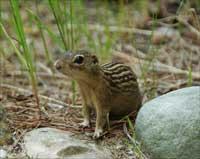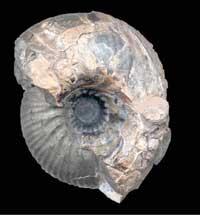For dinosaurs, yes or no

We know many things about mammals (such as bearded vultures, hair, vertebrae and hot blood), but we don't know when and where they came up, or if the dinosaurs had to do with their reproduction. So far it has been admitted that mammals increased enormously when the dinosaurs disappeared, because they wanted to occupy the place left by these great beasts. It is said that mammals had a boom.
Two opposing studies
In the March issue of the prestigious journal Nature, an investigation was published in which the widest research that has been carried out on the basis of fossils and DNA molecules of current mammals overturned what was thought. According to these results, dinosaurs had nothing to do with the mammal boom, and the real boom occurred at 15 million years after the disappearance of dinosaurs. In addition, they said that mammal ancestors were born today between 100 and 85 million years ago, 20 million years before the destruction of dinosaurs!

Three months later, another research was published in Nature: the widest conducted on the basis of fossils confirms what was previously thought, that is, that dinosaurs were destroyed and, immediately afterwards, placental mammals proliferated. In addition, the same study indicated that then, and not before, most of today's live mammals emerged.
This is the sauce! Within three months, two different explanations. What should we say now to students in the Natural Sciences classes?
Rocks vs Molecules
Previously only fossils and rocks informed us of the past. According to the appearance of these animals converted into stone, and comparing them with others, their similarities were observed and the relationship between groups of animals could be known. But about 15 years ago the DNA entered strongly. Like the rocks, the DNA molecules reveal the past. They are time recorders, analyzing them you can know what happened. DNA is analyzed in the species that live, since fossilized animals do not save DNA.

But what fossils and molecules say do not always coincide, that has also been clear on this issue of mammals. It's not the first time. For example, fossils claim that on Earth there have been plants for 475 million years, while molecules say that 700 million years ago. In case of disagreement, the molecules always consider the oldest facts than the fossils.
Neither one method nor the other is perfect, they have gaps: not finding fossils, for example, does not mean that there are no fossils and the methodology of analysis of DNA tends to increase data. Despite the problems, scientists are working to make the difference between both methods less and less, because they consider that there is the key to giving a joint result. To see when the mammals clarify us that we were taking advantage of or we cared for the disappearance of the dinosaurs!
Published in 7K.
Buletina
Bidali zure helbide elektronikoa eta jaso asteroko buletina zure sarrera-ontzian











